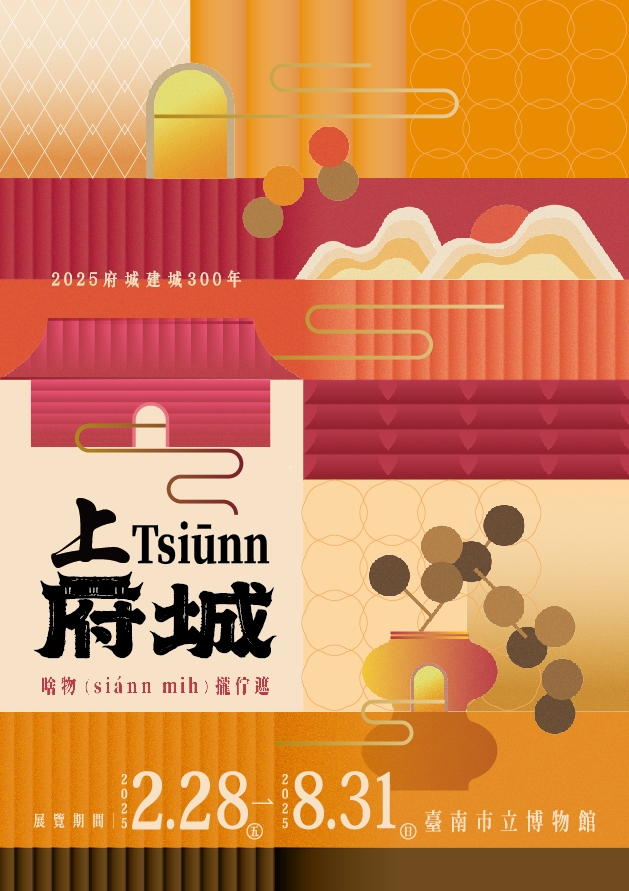特展
上(Tsiūnn)府城-啥物(siànn-mih)攏佇遮

上(Tsiūnn)府城-啥物(siànn-mih)攏佇遮
2025.02.28 to 2025.08.31
位置 | 1樓特展間
展覽的故事從「城牆」說起。城牆佇立,其閉合與圍繞的性質,使得官民得以因為城牆而被保護,市街、廟宇與設施亦能免於外來威脅。中心與非中心、城內與城外的生活方式傳承世代,積累出府城內外交流互動的共同經驗。隨著時間流逝,府城城牆失去原有防衛功能,又因都市發展而部分拆遷。實體的府城城牆不再完整,城牆遺跡融入新的城市地景。
過去三百年來,有形的城牆形塑了無形的府城文化,「城內與草地」的差異、十字大街與聯境組織、連結城區內外的各種民俗活動等,是今日生活中熟悉又陌生的存在,此次展示希望將昔日的記憶帶回當代,並與正在閱讀本段文字的您,一同思索在2025年的今天,如何以新的姿態,重新回顧建城300。
Inside the Fucheng (Prefecture City)
Life Within the Walled City
The exhibition's narrative begins with the establishment of the "City Wall." The walls' presence, with their enclosing and encompassing nature, provided protection for both officials and civilians, while sheltering streets, tem-ples, and facilities from external threats. The distinction between center and periphery, life inside and outside the walls, has been passed down through generations, accumulating shared experiences of interactions between those within and beyond the Fucheng. As time passed, the Fucheng's walls lost their original defensive function and were partially demolished due to urban development. While the physical walls no longer stand complete, their remains have become integrated into the new urban landscape.
Over the past three hundred years, the tangible walls have shaped an intangible cultural heritage. The distinctions between "inside the city" and
*Ck customs i Various tol activities cotsant un trd an and auran arend
are both familiar yet strange to contemporary life. This exhibition aims to bring these historical memories into the present, inviting you, the reader of these words, to contemplate how we might adopt a fresh perspective in 2025 to revisit the 300th anniversary of the City's construction.
